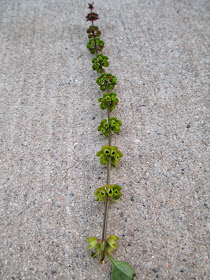Standing at the top of Hoover Dam in Nevada, the view is stunning. And disturbing. Yes, I've heard we're in a drought in California. Yes, I try to be conscious of my water use, try to conserve. But seeing that bathtub ring around Lake Mead really stunned me. The water level is shockingly low.
Recently I visited my brother who lives near Las Vegas. We went on a tour of the Hoover Dam which is nearby. The dam was built in the 1930's and it is a marvel.
It was built to tame the Colorado River which had an unruly tendency to flood. It was built to allow man to channel the water, to carry it to the fertile valleys so that future generations could grow organic food in their urban gardens (and take a shower afterward). The hydroelectric power supplies electricity too.
In Southern California we rely on a system of aqueducts to bring us water since we get so little rainfall. Seeing this source of water so depleted had an impact on me, it made me even more aware of the need to conserve water. Gardening obviously requires water, so I take steps to use water wisely.
I thought I would share are some tips on conserving water in the garden.
1. Amend the soil, add organic matter. Rich soil holds moisture. My soil tends to be sandy so adding compost is a must.
2. Apply a layer of mulch. This prevents evaporation as it holds the moisture in and keeps the soil cooler by blocking the sun.
3. Water only when the plants need it. Every plants has its wilting point, the point where the moisture content is so low that the plant wilts. Clearly you want to water the plants before they reach that point. Some plants require more moisture than others, so grouping plants with similar requirements is helpful.
4. Adjust how deeply and how frequently you water as the plants grow. When plants are young their roots are shallow, so they need to be watered more frequently since the top few inches of soil dry out the fastest. As the roots grow deeper, you need to water longer so the water goes deeper. Because the deeper soil stays moist longer, you can water less often as the roots grow deeper. So as the season progresses I water for longer duration and less frequently.
5. Use soaker hoses. Soaker hoses reduce water loss through evaporation and run-off. They also target the water where you need it. I find that I still need to do some hand watering in my garden as there are inevitably a few dry patches between the hoses, but at least I'm not watering the pavement with sprinklers.
6. Water in the very early morning hours. This reduces water loss through evaporation. It also ensures the plants are well hydrated to face the heat of the day. Watering in the evening can lead to problems with mildew.
7. Let the lawn suffer a little in the summer. I love a perfectly lush lawn as much as the next guy, but it is such an extravagant waste of water. I'm guilty, lawns are present both in the front and backyards at my house. I water them just enough to keep them mostly green but they are not lush, that's for sure. Lately I've noticed more and more lawns being replaced by xeriscape gardens and I love them. Maybe someday I'll take the plunge too, maybe.
Seeing the dam gave me a renewed appreciation for the miracle which is running water and it made me proud of my American roots. The size is awe inspiring.
What a feat of engineering and gusto. Knowing it was built in the depression gives it a nostalgic feel for me. What a source of pride and financial security it must have been to our depleted Americans at that time of struggle. Men toiled in the Nevada heat for fifty cents an hour, and they built this mammoth damn which is 726 ft high and 1,244 ft long and contains 4.5 million cubic yards of cement. The Hoover Dam Tour is a nice side trip if you find yourself in need of a break from the lights and chaos of Vegas.
A small community was needed to house the laborers who built the dam, so Boulder City, Nevada was born. I mention this because an extraordinary thing happens in that town each evening. Down from the mountains come a herd of big horn sheep, walking right down the city street to Hemmenway Park. They come to graze, and people come to watch.
 |
| Big horn sheep with Lake Mead in the background. |
 |
| Big Daddy |
 |
| My nephew standing 20 ft from the normally elusive big horn sheep. |
 |
| We counted 61 sheep in the park. |
 |
| Baby horns |
What a treat to see these beauties up close.























































